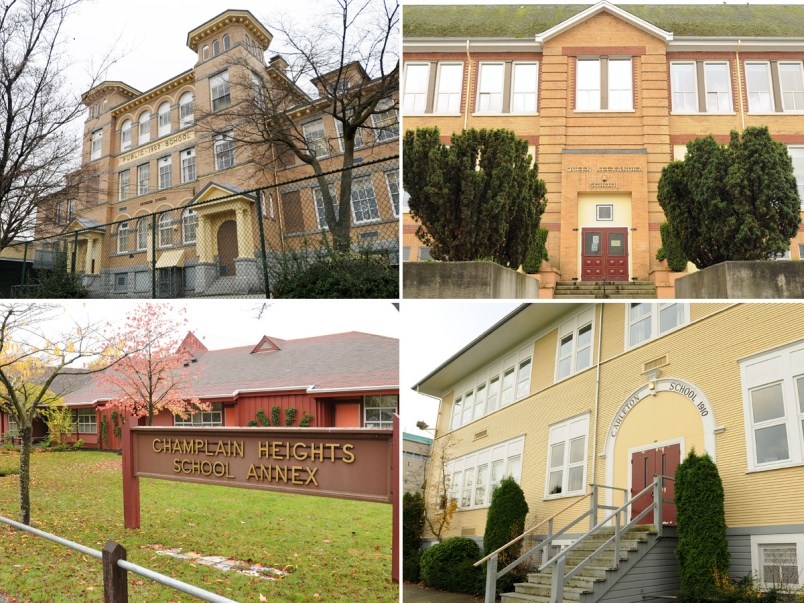Parents across Vancouver are likely heaving heavy sighs of relief after school trustees took school closures off the table, at least until September.
But it’s hard to believe they’re off the table forever, given that the Vancouver School Board’s space and safety issues are still extreme.
Several old, dilapidated schools have been deemed unsafe if an earthquake hits, and the district pays millions extra each year to keep those old schools maintained. VSB staff claims at least 10,000 empty seats, mostly on the city’s East Side schools, while newer schools downtown and in neighbourhoods with a lot of development are busting at the seams.
In February, the VSB released a draft plan for its $7.6 billion in lands and buildings that analyzed what would happen if up to 28 different schools in the district closed.
Last week, VSB trustees voted to remove a recommendation from that plan that would have seen a closure list created by September.
We’ve been here, done that.
In 2016, the VSB also took school closures off the table when the then-Liberal government changed a requirement for school districts to be 95 per cent full. The entire process of discussing closures was fraught with anxiety and tension — the school board ended up fired, several staff members went on medical leaves and bullying allegations were made as a result.
This time around, dad Shaun Kalley, chair of Vancouver District Parents Association (DPAC), says he’s not convinced the issue is dead.
“I’m not celebrating yet,” Kalley said. “I’m really hoping for a stronger statement from either the board or staff to ensure that the intent of taking the recommendation out really is to keep closures off the table at least through the end of the next school year.”
When asked directly to respond to parents’ concerns, Patricia MacNeil, the VSB’s communications director, said “there is not a school closure list envisioned at this time.”
MacNeil pointed to VSB policy, which says the board may decide to permanently close a school, as long as it completes a public consultation process and informs the minister of education.
The VSB updated all of its policies last year and the new school closure policy has a shorter timeline than what used to be in place.
“It would not surprise me if other, targeted recommendations for closure come forward,” Kalley said. “But we — that is, everyone including the board, district staff, and parents — really need to start having the bigger conversations on the [facilities plan] now that the opportunity is open to us to do so.”
There are 40 schools in the city that are at high risk in an earthquake that have not yet been considered for upgrades. Enrolment across the city is also complex — while some schools have low enrolment, others, like Henry Hudson, where the VSB recently decided to phase out French immersion, don’t have enough room for neighbourhood kids.
The Ministry of Education had been sticking with a rule that it would not pay for any more upgrades than there were bums in seats. But Education Minister Rob Fleming turned that on its head in April, when he wrote a letter to trustees saying his government doesn’t want to close schools — it wants to build and expand them.
At their next general meeting, on April 26, trustees took the school closure recommendation off the table.
Kalley recognizes someone has to pay for this. While Fleming’s letter moved away from closures, it didn’t explicitly say the province would pay for seismic upgrades in schools with low enrolment. Ways to raise money should be part of the larger conversation, Kalley said.
The parent group is taking the government at its word and pressing trustees to challenge the status quo.
“Be bold in your thinking and set a progressive agenda that shows true understanding of the educational and community needs of students in Vancouver,” an open letter from the DPAC to trustees says. It urges trustees to create their own vision and formula for calculating capacity, based on what is best for student success, regardless of Ministry of Education constraints.
“We hope that formula would include community space for out-of-school childcare, wraparound programming that supports students and their families, and complimentary
non-profit programs,” the letter states. “The formula should also factor in vulnerability indexes and class composition needs. It should make allowances for art and music spaces, libraries, and other spaces that are not appropriately considered under the previous ministry formula.”
If the board did that, Kalley said, it could become a leader and a beacon for other districts.
Imagine that.



